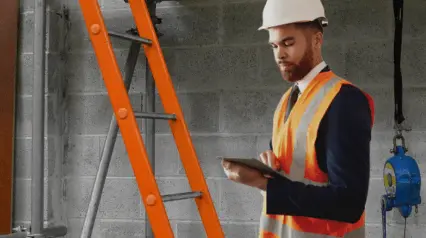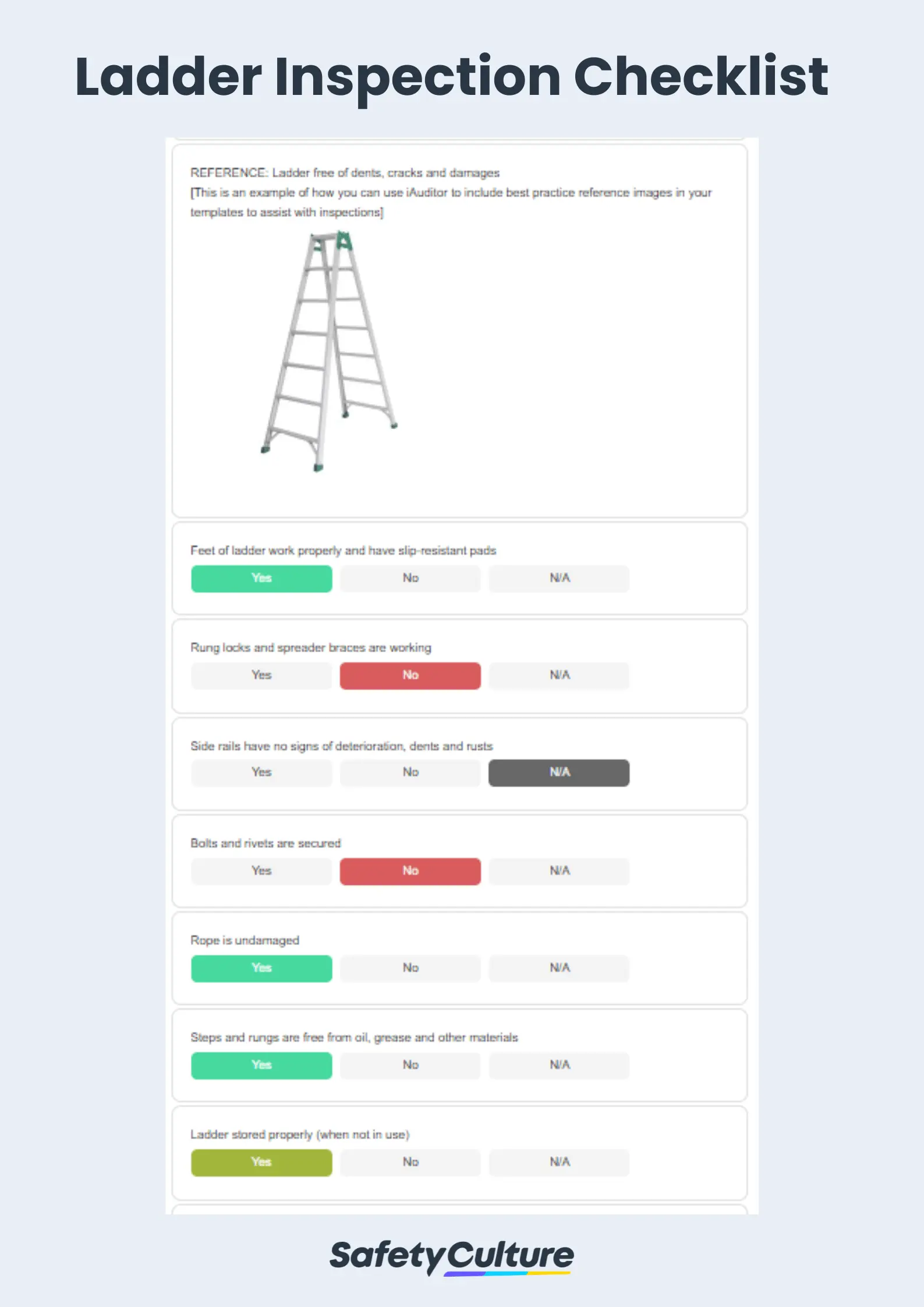What is Ladder Inspection?
Ladder inspection is the process of inspecting ladders for safety and to ensure that they are in good working condition. Maintaining the safety of ladders through regular inspections is important to help prevent ladder-related incidents and comply with regulations mandating the safe use of ladders in the workplace.
What is a Ladder Inspection Checklist?
A ladder inspection checklist is a tool guide used to assess the working condition of a ladder. It helps ensure that a ladder passes safety and quality standards before use and that it is being used correctly by trained workers. Using a ladder inspection checklist can help proactively catch issues that could lead to work-related injuries.
What to Include in a Ladder Inspection Checklist?
Ladder inspection checklists should provide an easy-to-follow guide on which areas to check to not miss anything before, during, and after using an industrial ladder. See below some of the sample questions you can consider including in your checklist:
General Information
First, you need to be clear about the characteristics of the ladder to be inspected and used.
- What is the type of the specific ladder to be used?
- What material is used for the ladder?
- What is the length of the ladder?
- What is the classification of the ladder (light duty, medium duty, heavy duty, etc.)?
- What is the maximum weight supported by the ladder?
Ladder Inspection
It is ideal to ask very specific questions that would enable any inspector and all users to inspect ladders. These questions can be like:
- Do the feet of the ladder work properly and have slip-resistant pads?
- Are the rung locks and spreader braces working?
- Are bolts and rivets secured?
- Are steps and rungs free from oil, grease, and other materials?
- Is the ladder stored properly and well-maintained when not in use?
How Often Should Ladders Be Inspected?
According to the Occupational Safety and Health Administration (OSHA) in the US, ladders should be inspected before initial use in each shift and even more often, if necessary. Similarly, guidance from the Health and Safety Executive (HSE) in the UK states that ladders should be inspected at the beginning of each working day. In addition, ladders ought to be examined following any incident, like a fall, or if any damage is apparent.
What Should Be Inspected?
If using a ladder cannot be avoided, it’s important to inspect the following before proceeding with the task:
- Label and Manufacturer’s Instructions – To find out if the ladder was designed to be used for the task at hand and if there is a specific inspection procedure for the ladder
- Tag – To find out if the ladder was inspected before and if the previous inspection revealed that the ladder was safe to use
- Fall Protection or Fall Arrest Systems – Required for work performed at 2 meters or above (working at height) and includes safety harnesses and landing areas
- Condition and Cleanliness – All parts of the ladder should have no signs of damage or defect and should be free from debris, dirt, oil, and grease
How to Perform a Ladder Inspection
While ladder inspections are the employer’s responsibility, all workers should be trained on how to inspect and safely use a ladder.
Portable Ladder Inspection
Step 1: Lay the ladder flat on the ground.
Step 2: Start at the base of the ladder and inspect the feet, foot pads, and shoes.
Step 3: Inspect the ladder rails and rungs for any damage, such as dents or cracks.
Step 4: Check if the connections of the rungs to the rails are secure.
Step 5: Inspect the spreader and see if it opens and closes smoothly.
Step 6: For extension ladders, inspect the locks and flippers of the lock.
Step 7: For extension ladders, bring the ladder up from the ground and rest it against the structure that it will be placed on during use. Do not go up on the ladder to inspect it.
Step 8: For extension ladders, check if the rope is properly secured to the fly section of the ladder and that the rope moves easily through the pulley system.
Fixed Ladder Inspection
Step 1: Inspect for corrosion, rot, splinters or protruding pieces, and loose components.
Step 2: Start at the bottom of the ladder and check the supports, fasteners, and anchors.
Step 3: Visually inspect the clearances of the ladder for obstructions and determine if climbing up and down can be done easily, with minimal chances of falling or of being unable to get down to ground level.
Step 4: Go up the ladder and, while using three points of contact, inspect the side rails, grab bars, and side rail extension anchors.
Step 5: Inspect hatches, if there are any, and the hatches’ opening arms.


